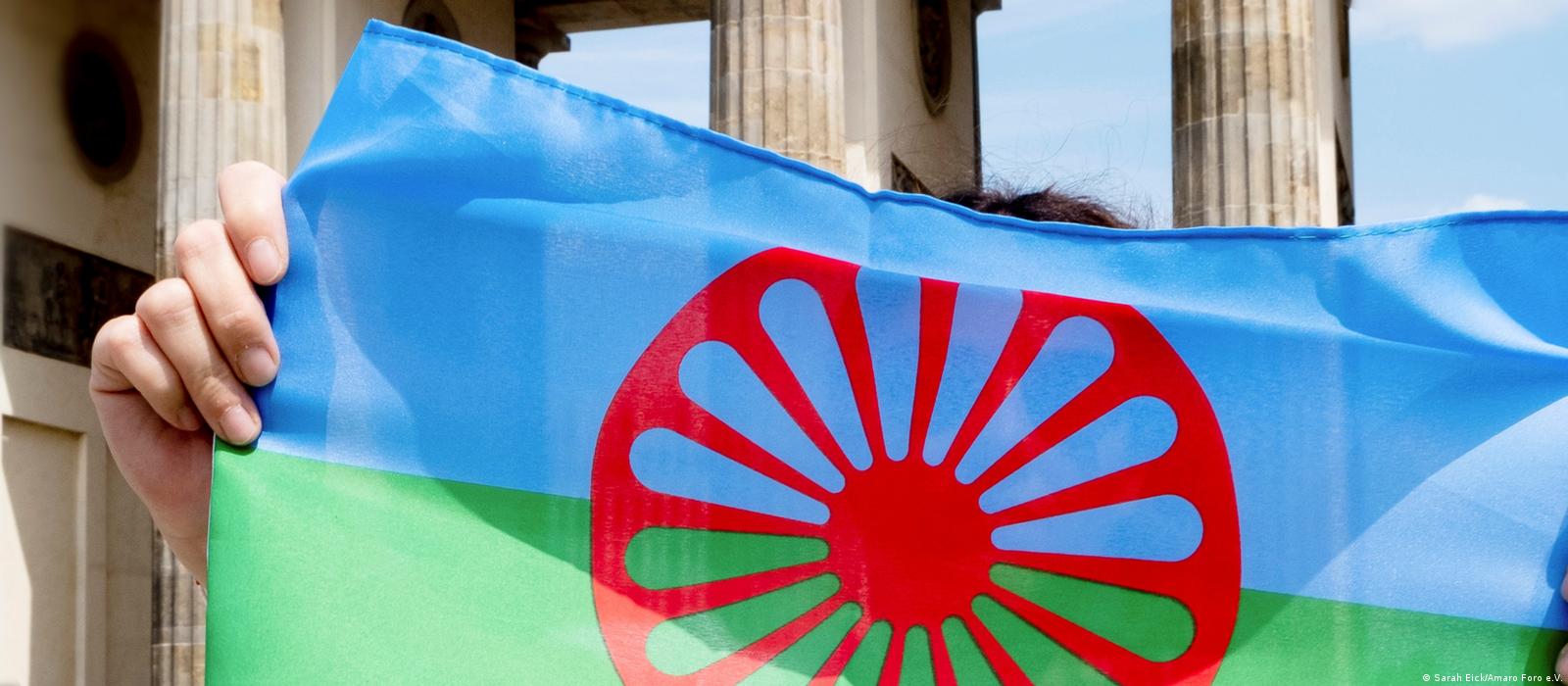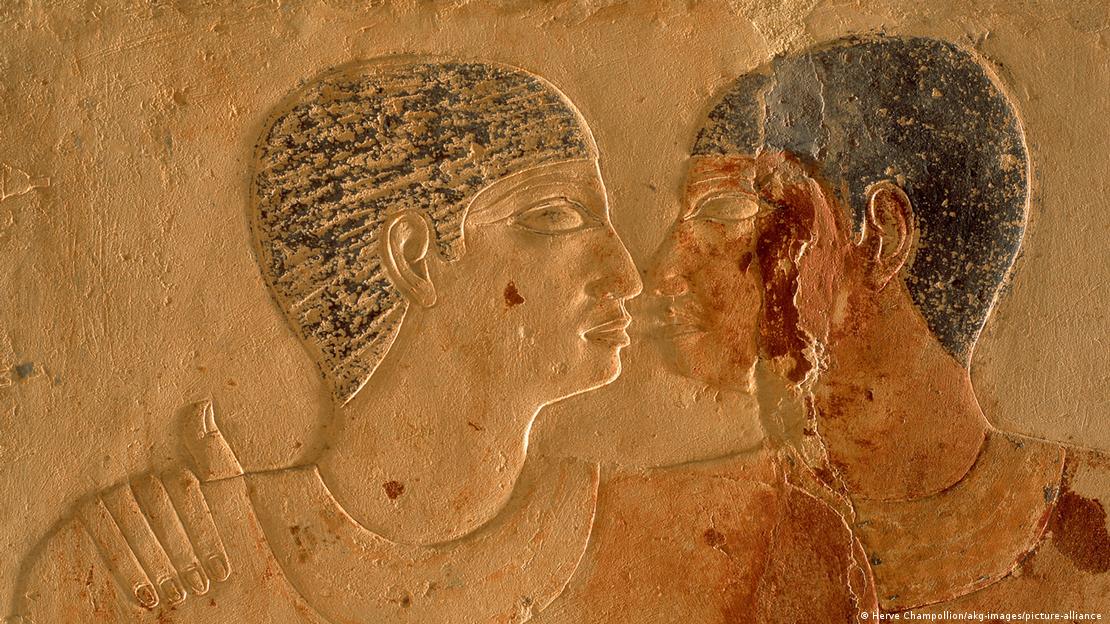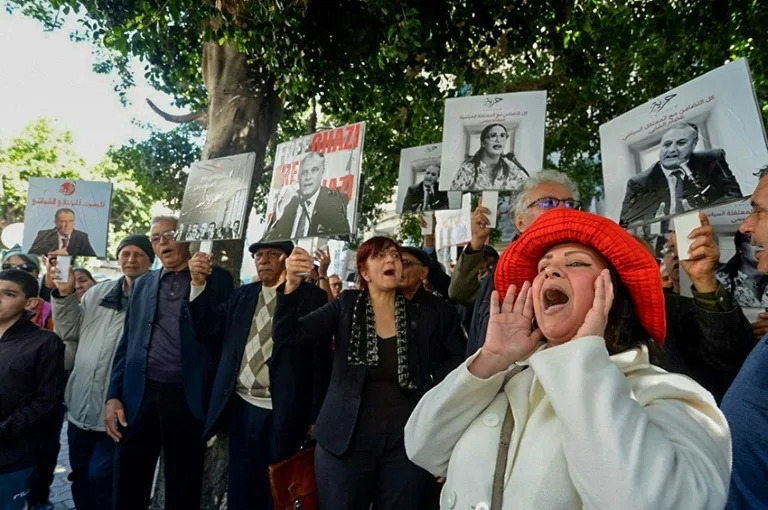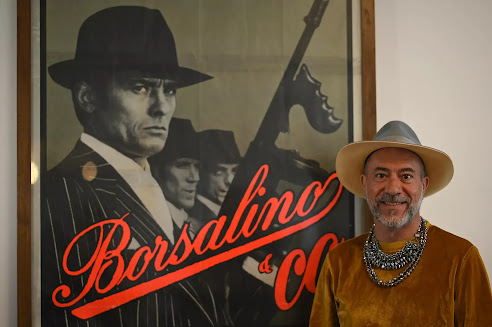Native Americans corralled Spanish horses decades before Europeans arrived
DNA and skeletal clues rewrite the tale of how horses came to the Great Plains by the 1600s
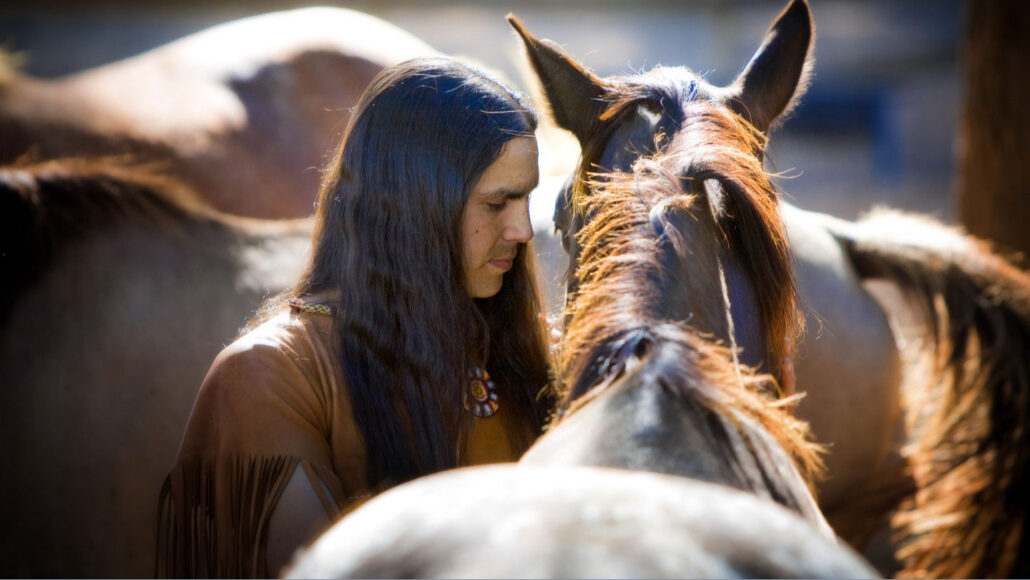
A collaboration between Western scientists and Native Americans finds that Indigenous groups rapidly incorporated horses of Spanish ancestry into Great Plains cultures by the early 1600s. Some Indigenous oral histories say their relationship with horses goes back even farther to possible equine survivors of the Ice Age. SACRED WAY SANCTUARY
By Bruce Bower
Science News30/3/2023
Indigenous knowledge and Western science have written a new tale about when horses most recently arrived in North America.
Spaniards brought horses to Mexico in 1519. Indigenous peoples then took the reins, rapidly transporting offspring of those equine newcomers north along trade routes. As a result, a new study finds, many Native American populations across the Great Plains and the Rockies had incorporated horses into their ways of life by the early 1600s, decades before encountering any Europeans.
This unconventional scenario of how domesticated horses originally spread throughout central and western North America bucks a previous narrative: European written accounts dating mainly to the 1700s and 1800s had contended that horses first spread into North America in large numbers after Pueblo people temporarily drove Spanish settlers out of New Mexico in 1680. But little evidence existed to confirm or deny that claim.
Europeans’ historical texts didn’t ring true for molecular archaeologist Yvette Running Horse Collin of the Center for Anthropobiology and Genomics of Toulouse in France. Running Horse Collin is a member of the Oglala Lakota Nation. Great Plains populations such as the Lakota and Comanche speak of having cared for, herded and otherwise interacted with horses long before Europeans showed up.
Running Horse Collin contacted Toulouse colleague Ludovic Orlando, a molecular archaeologist who has traced the origins of domesticated horses to southwestern Asia more than 4,200 years ago (SN: 10/20/21). The duo organized a large collaboration of Western scientists and Indigenous scholars and officials, including members of the Lakota, Comanche, Pawnee and Pueblo Nations.
“Our findings indicate that horses spread from Mexico into North America by the turn of the 17th century and were raised locally, which strikingly lines up with Native American perspectives,” archaeozoologist William Taylor of the University of Colorado Boulder said at a March 28 news conference. Results of their investigation appear in the March 31 Science.
Taylor directed an effort that located and radiocarbon-dated previously excavated remains of 23 horses from western North America and six horses from Argentina. Three of the North American horses dated to the second half of the 1500s, well before the 1680 Pueblo Revolt. Those specimens came from sites in Kansas, New Mexico and Wyoming. Reanalysis of a previously radiocarbon-dated horse’s remains from an Idaho site, using a technique that measures the amount of near-infrared radiation absorbed by bone, produced a comparably early age estimate.
Rock art of an undetermined age at a Wyoming site depicts a horse and rider that researchers suspect was carved by ancestral Comanche or Shoshone people.PAT DOAK
What’s particularly important is that those finds yielded evidence of Native American groups caring for, riding and culturally embracing horses by the early 1600s, says archaeologist Mark Mitchell of the Paleocultural Research Group in Broomfield, Colo., who did not participate in the new study.
The earliest North American horse remains include bony growths at the back of the skull consistent with the use of a halter or bridle, Taylor said. One horse from the 1500s displayed the kind of dental damage seen from use of a bridle’s metal bit. Another early horse had been found among various ritual artifacts, indicating that it had held ceremonial meaning of some kind.
Analyses of diet-related chemical elements in teeth typical of particular geographic regions indicated that one early North American horse had grown up locally. Another was raised even farther north, probably part of a managed herd that was fed maize during part of the year, the researchers say.
DNA comparisons with a range of modern horses showed that early North American horses were primarily of Spanish ancestry.
Some Indigenous oral histories suggest that their interactions with horses go back thousands of years to equines that might have survived the Ice Age. But analysis of DNA retrieved from remains of two Ice Age horses previously found in Alaska — one dating to about 26,100 years ago and another to around 28,400 years ago — showed no direct ties to later North American horses. Scientists generally suspect that wild horses first evolved in North America over tens of millions of years before dying out around 10,000 years ago.
For now, the scientific evidence just supports the pre-European integration of horses into Great Plains societies, says University of Oxford archaeologist Peter Mitchell, who was not part of the new investigation. Further research needs to establish precisely how long ancient wild horses survived in Alaska, he says.
Taylor and his colleagues have nonetheless married Western science to Indigenous knowledge in a way that “sets a new standard for archaeological research into the early spread of the horse and the take-up of horse usage by Indigenous groups” throughout the world, Mitchell says.
HORSE NATIONS
After the Spanish conquest, horses transformed Native American tribes much earlier than historians thought

Ethnohistorian Yvette Running Horse Collin has studied the Lakotas’ ancient bond with horses, reflected in ceremonial battle gear. JACQUELYN CORDOVA

Table of contents
A version of this story appeared in Science, Vol 379, Issue 6639.Download PDF
Scattered across the prairie east of the Colorado Front Range are rings of ancient stones. The rings were used to anchor tipis, and they measure barely 2 meters across. Matt Reed, the Pawnee Nation of Oklahoma’s tribal historic preservation officer, says that tiny footprint comes as a surprise to modern Pawnee, whose traditional tipis are big enough to fit whole families.
The change, Reed explains, resulted from the introduction of the horse. For millennia, the Pawnee had relied on dogs to haul their belongings on bison hunting trips; when they acquired horses, the impact was immediate and dramatic. “They allowed us to carry more gear, pull more food, have bigger tipis,” Reed says. “It’s so hard to imagine our culture without horses, it boggles your mind.”
For Native peoples on the Great Plains grasslands that stretch from the Rocky Mountains to the Missouri River, horses took on a central economic and military role, enabling bison hunting on a large scale and raiding across vast distances. “The introduction of this technology, of horses, changed Great Plains cultures,” says Carlton Shield Chief Gover, a member of the Pawnee Nation and an archaeologist at the Indiana University Museum of Archaeology and Anthropology. “It’s the equivalent of the airplane. It shrank the world.” Knowing when that happened is critical, he says. A new study today in Science, of which Shield Chief Gover is a co-author, offers a startling answer.
Centuries ago, the Americas were apparently horseless—even though Equus had evolved in the Americas more than 4 million years ago, spreading west from there into Eurasia and Africa. When the ancestors of Native Americans entered North America toward the end of the last ice age, more than 14,000 years ago, they would have encountered herds of wild horses. From the archaeological evidence—cutmarks on bones found at a handful of sites—it seems early Americans hunted horses and used their bones as tools, but did not domesticate or ride them. And by 5000 years ago at the latest, the fossil record suggests, North America’s horses were gone. Along with nearly 40 other species of megafauna, from saber-toothed tigers and mammoths to camels, they were wiped out by hunting, climate change, or both.
It wasn’t until 1519 C.E., when Spanish conquistador Hernán Cortés made landfall on the Gulf Coast of Mexico, that horses entered the Americas again. His 16 horses stunned local people, and the shock helped him defeat the Aztec Empire just 2 years later. In the centuries that followed, the horse spread once again across the continent, this time as a status symbol, means of transport, and hunting companion rather than prey. In the process, it set off massive human migrations, as some Native groups shifted to more mobile lifestyles. It also unleashed struggles over resources on the Plains and elsewhere.
Historians have tended to date the widespread adoption of the horse by Native peoples to the 18th century, when the first European travelers recorded its presence in the central and northern Plains. But in the sweeping new study, based on archaeological evidence, radiocarbon dating, isotope analysis, and ancient DNA, Shield Chief Gover and dozens of other researchers conclude that horses had made it that far north up to a century earlier. The study shows they had begun to spread within a few decades after the Spanish introduced them to the Southwest in the 16th century.
“It’s a really detailed, round, robust, multimethodology way of looking at the data set that starts to define, from an archaeological perspective, when horses appear in the American West,” says University of Oxford archaeologist Peter Mitchell, who was not involved with the research. “This paper totally changes the game.”
DESPITE THE HORSE’S iconic importance to so many Native cultures, little archaeological research has been done on its spread. Written records reveal such details as the names of Cortés’s steeds and the first time Spanish soldiers encountered Comanche warriors on horseback. But because the horse’s dispersal happened mostly out of sight of European chroniclers, much of the process wasn’t documented, or was written in a way that emphasized the role of Spanish and later settlers.

Petroglyphs in southern Wyoming, probably dating to the early 17th century, include well-preserved images of horses and riders, depicted with riding equipment and shields. The site is connected with ancestral Comanche and Shoshone people. PAT DOAK
Based on those written sources, many historians have tended to compress the adoption of the horse by tribes throughout the Great Plains and Rocky Mountains into a pivotal half-century, beginning in 1680 with a bloody revolt against Spanish rule by Pueblo people in New Mexico and ending with the first European accounts of horses on the northern Plains. After the uprising, the story goes, the Pueblos sold thousands of horses that had belonged to the expelled Spanish to neighboring tribes. “What historians argue is that the Pueblo Revolt pushes a volume of horses, enough to transform tribes,” far to the north, says Dan Flores, an emeritus historian at the University of Montana, Missoula.
“In the aftermath of the Great Southwestern Rebellion, the horse frontier moved rapidly outward from New Mexico along the ancient Indigenous trade routes,” Oxford historian Pekka Hämäläinen writes in Indigenous Continent: The Epic Contest for North America, a history of Native societies published last year. “A Rocky Mountain trade chain had carried horses to the Northwestern Plains by the 1730s. … The horse trade ignited a technological revolution that reconfigured several Indigenous worlds within a generation.”
Historians weren’t fazed by the implication that it took so little time for the horse to be incorporated into Native economies, military strategy, and religious ritual across a vast geographic area. Flores and others argue that adoption was facilitated by contact with the Spanish, who employed Pueblo people to herd horses and other livestock in New Mexico in the early 1600s. “You have to have a horse-riding culture and technology, along with the animal, to make this work,” he says.
Native accounts contradicted the timeline centered on the Pueblo Revolt, suggesting some tribes had acquired horses much earlier, but “oral tradition was discounted,” says Comanche historian Jimmy Arterberry, a co-author of the Science study. “The end result has been to discredit the antiquity of the relationship between Native people and horses,” adds University of Colorado, Boulder, archaeologist William Taylor, also a co-author.
Until recently, archaeologists took the compressed historical timeline for granted. When they excavated horse remains on the Great Plains, they usually assumed the bones were either very old, dating from before the disappearance of horses many millennia ago, or very recent, from animals brought to the Plains by European settlers. As a result, many horse remains found on the Great Plains wound up in paleontological collections rather than archaeology labs. Just a handful had been radiocarbon dated. The Science study includes dozens of new dates and shifts the timeline earlier.
Dates of horse remains from sites in Wyoming and Nebraska, for example, show people far beyond the Spanish frontier were breeding, feeding, herding, and caring for horses—and probably riding them—beginning sometime after 1550, and had thoroughly incorporated them into their societies by 1650 at the latest. That “provides more time for the transformations the horse brought about to take place,” Mitchell says.

Archaeologist William Taylor inspects the jawbone of a foal from Blacks Fork, Wyoming.
PETER BITTNER
Some historians say they’ve made steps in that direction, using ethnographic and linguistic evidence. The idea that horses might have been adopted by Native groups in New Mexico and beyond in the 1600s, prior to the Pueblo Revolt, “is pretty much in line with what historians have been writing for the last 20 or 30 years,” says Ted Binnema, a historian at the University of Northern British Columbia. “The entire military history of the Plains seems to make sense with this timeline.”
But pushing the arrival of the horse back much further is a stretch, he says. Spanish troops entering New Mexico in 1598 make no mention of encountering mounted warriors. “Any evidence Indigenous groups were already equestrian before 1598 would be a big discovery,” Binnema says. “But this isn’t enough to convince me.”
EMILY LENA JONES keeps what the zooarchaeologist at the University of New Mexico, Albuquerque, considers the key evidence in a clear plastic organizing tub. Inside are Ziploc bags filled with fragmented, bleached-white horse bones from a village on the outskirts of Albuquerque. The site, called Paa’ko, was settled by Puebloan people beginning in 1525, and briefly used as a mission by the Spanish between 1650 and the Pueblo Revolt of 1680.
For decades after it was first excavated in the 1930s, researchers assumed the handfuls of horse bones at Paa’ko dated from that short-lived Spanish occupation. They identified them as the remains of the Spanish friar’s mounts, eaten by the Native residents.
When Jones radiocarbon dated the bones in 2020, she was surprised to find they were at least 400 years old and probably even predated the establishment of the first Spanish settlement in New Mexico in 1598. Given Spanish records describing the horse as a tightly restricted military asset, the idea that they were in areas not under Spanish control came as a surprise. The new timing, she says, “opens up a wide range of cultural change happening outside of European view.” Jones thinks Paa’ko might have been an early transit point where Native people moved horses from Spanish-controlled areas east to the Plains.
As she, Taylor, and other members of their team gathered radiocarbon dates from sites across the Great Plains, they found more samples that predated the Pueblo Revolt—some by nearly a century. At a site in southwestern Wyoming called Blacks Fork, a young foal was buried together with three coyote skulls, evidence it may have been part of a religious ceremony. Analysis of the animal’s bones and teeth shows it was about 6 months old when it died. Bone formations on its skull suggested it was tethered, and a healed facial fracture showed it had been kicked by another horse—all support for the idea that it was kept close to other horses, and given veterinary care to help it recover from its wound.
Some researchers who analyzed the site in the 1990s discounted the possibility that Native people would have known how to handle a horse that way. Instead, they speculated the Blacks Fork horse might have been brought to the region by an unrecorded Spanish expedition.
But the new radiocarbon date for the Blacks Fork horse shows it was raised, tethered, and buried sometime between 1600 and 1650, many hundreds of kilometers north of Paa’ko and Spanish outposts in New Mexico. “I was very surprised by the Blacks Fork horse. I thought we’d find some horses that were earlier than the overarching narrative said, but I didn’t expect this line of inquiry to bear fruit so quickly,” Jones says. “Every time we’ve thrown something in there, it’s come back in this earlier date range.”
“People are going to have to go back into their collections and start redating horses,” Shield Chief Gover says. “This is upending the status quo.”
IN HIS RED PICKUP, Taylor and his team continue to visit local and regional museums from Wyoming to Kansas in search of bones to analyze. “To engage with this material requires putting a lot of miles on the odometer and working with a lot of small collections,” Taylor says. As they persuade curators to part with bits of bone for radiocarbon and chemical testing, the team also digitizes the bones with a hand-held 3D scanner. Back at their computers in Boulder, they can measure and analyze the scans digitally, or even print out plastic copies to share with the public.

A healed fracture on a foal's right jaw suggests tribes in Wyoming cared for horses by the 17th century.
PETER BITTNER
The results enable them to go beyond the age of the bones to the lives of the horses—and of the humans who cared for and relied on them. In a darkened lab at the museum, Taylor and Lakota grad student Chance Ward, a member of the Cheyenne River Sioux Tribe, deploy beetles to scour the flesh from modern horse cadavers. The modern bones serve as references: Draft horses, wild horses, horses ridden in the deserts of New Mexico and Arizona or the steppes of Mongolia—all show distinctive skeletal changes that can be compared with marks on the ancient North American bones.
Cradling a 3D printed copy of a horse skull from Mongolia, Taylor points to a groove midway along the long, sloping nose, caused by pressure from a bridle. “If you press on this continuously for 10 years, you get marks that are diagnostic,” he says. “It’s negative space, but in 3D models we can measure it.”
Similar marks in bones from early Native American horses can help prove they carried a rider, wore a bridle, or pulled a travois—a frame, made of two poles and a net, that Plains people used to drag loads. Metal ring bits adopted from the Spanish caused distinctive fractures in an animal’s teeth and palate; rawhide bridles developed by Native people wore telltale grooves in the lower jaw. “Every little aspect of human activity and relationship to horses leaves a signature, if we can find it,” Taylor says. “It’s not just whether people rode them, but also how.”
The bones contain other clues, too. Horse teeth found on the banks of the Kansas River in northeastern Kansas, and dated to before 1650—at least 30 years before the Pueblo Revolt—are a good example. Isotopes in the teeth reflect those in the groundwater where the animal was reared. They show the horse, about 9 years old when it died, had spent time farther north, perhaps in Iowa, before it was moved into Kansas. The isotopes also show it was fed corn, a wintertime staple for Plains people. “It’s an incredible snapshot of an animal that was deeply integrated into Indigenous culture,” Taylor says—and another bit of evidence, he thinks, that the spread of horses across the continent didn’t “have anything to do with European people other than that first horse off the boat.”
Instead, that rapid spread highlights the intricate trade networks and political alliances that knit together tribes from the arid Southwest to the forests of the Missouri River valley. And ultimately, understanding the movements of horses through isotopic and genetic analyses could help trace human migration during a tumultuous period. “Knowing when horses are where they are, and who has them, can add to our understanding of tribal history and politics,” Shield Chief Gover says. “Archaeological research can provide tangible history that ties people back to places.”
PERHAPS THE MOST striking aspect of the Science study is how it shows Native views and laboratory science can enhance—and also challenge—each other.
In 2018, University of Toulouse geneticist Ludovic Orlando received an email with an unusual request. Orlando had just published a wide-ranging paper tracing the lineage of horses across the world today to the steppes of Eurasia around 2000 B.C.E. The email came from ethnohistorian Yvette Running Horse Collin of the Oglala Lakota Nation, who had just defended a doctoral dissertation with a very different perspective. Drawing on Native oral histories—including the Lakota tradition that the tribe has had a relationship with the horse “since time immemorial”—Collin argued that the horse never went extinct in the Americas at all. The arrival of Spanish horses in 1519, in her view, had been a reunion rather than a reintroduction.
Intrigued, Orlando invited her to Toulouse—and eventually to collaborate on a genetic investigation into the origins of Native horses that became part of the Science paper. “I very rapidly realized there was room for questions about the origins of the horse,” Orlando says, “and we developed an experimental design to test all this.” Collin, for her part, says the horse seemed like an ideal vehicle “to further a discussion” on marrying Native and Western approaches to knowledge. “I did not come to Ludovic to help me to prove what we already know,” she says.
Together with Taylor and other colleagues, the Toulouse team collected DNA from the bones of 29 horses of the historic period, from the 17th century and later, along with samples from modern horses cared for by the Lakota and other tribes. They then compared the DNA with Orlando’s database of modern and ancient horse genomes.
Horses evolved millions of years ago in North America and, after spreading to Eurasia and Africa, went extinct in their homeland at the end of the last ice age. Spanish and British colonizers brought them back.Original dispersal from Great PlainsBefore 1400 C.E. (Viking)After 1400 C.E. (Spanish/Portuguese)After 1600 C.E. (Dutch/British)The Great Plains
(GRAPHIC) D. AN-PHAM/SCIENCE; (DATA) W. T. TAYLOR/UNIVERSITY OF COLORADO MUSEUM OF NATURAL HISTORY
The results showed horses on the Great Plains in the historic period were closely related to horses in Spain at the same time. By the 1770s, however, genetic signatures from British breeds began to filter into the region, and horses there today show a mix of both Spanish and British ancestry (and no link to horses the Vikings are known to have taken as far as Greenland). The researchers looked for traces of DNA hailing from the horses that had lived in the Americas in the ice age or right after. They found none.
“We did their genomes, and they look Western in origin,” Orlando says. “Does that change the fact that the Lakota view the horses there today as theirs? No.” Nor should it, he adds: “I don’t want the world to conclude this is a genetic demonstration they had no relationship with the horse.”
Unusually for a scientific paper, this one acknowledges that some interpretive gaps among the authors remained unbridged—and it includes a statement from Lakota elders, several of whom are co-authors. “Horses have been part of us since long before other cultures came to our lands,” Lakota Chief Joe American Horse writes, “and we are a part of them.”
The paper leaves open a tantalizing possibility. DNA recovered from soil in the Arctic suggests horses might have survived until at least 5000 years ago in parts of North America, where people hunted them and fashioned their bones into tools. Perhaps the memory of that early relationship survived for millennia and is preserved in the oral tradition of the Lakota and other groups—who then reestablished a connection with domesticated horses in the past few centuries. “It would be crazy to dismiss this idea without testing it further,” Taylor says. “And now we can start to do that.” More radiocarbon dates and DNA, along with other methods, might even document an intersection between ancient horses and the Lakota and other groups, he says.

This Nokota mare is descended from horses that belonged to Sitting Bull, the 19th century Lakota leader who fought to defend a way of life that horses made possible.
MARY KATHERINE MORRIS PHOTOGRAPHY/SACRED WAY SANCTUARY
Other tribes have very different oral traditions, some of which the new research reinforces. In Pawnee, Shield Chief Gover points out, the word for “horse” translates as “new dog.” Other Indigenous languages, too, reflect an initial unfamiliarity with the beasts: Blackfeet called them “elk dogs,” Comanche “magic dogs,” the Assiniboine “great dogs.” “Even in language, it shows up as ‘what is this?!’” Shield Chief Gover laughs. “Our oral traditions do not say we’ve always had horses. This is another piece of evidence that shows oral traditions were always correct, and archaeology’s catching up.”
One traditional Pawnee song, still sung by elders in the tribe today, tells of a long-ago encounter with a group of mounted outsiders in armor. “The song talks about people with metal, very foreign, who started a fight. We finished it, and took horses from them,” says Reed, who was not involved in the Science study. In 1540, as it happens, a Spanish conquistador named Francisco Vázquez de Coronado led a large expedition, including several hundred horses, north through New Mexico as far as what is now Kansas, where the Pawnee lived before they were pushed onto Oklahoma reservations. Based on Spanish accounts, the 1540 date had seemed too early for the Pawnee to have acquired horses—but the new study makes it conceivable. “This research verifies and solidifies our history, and that’s important,” Reed says.
Linguistic evidence reflects how rapidly and thoroughly the horse was incorporated into Native societies. When ethnographers wrote down Pawnee, Comanche, and other Native languages in the 1800s, the vocabularies included dozens of Indigenous terms for horse anatomy, tack, appearance, and breeding, along with extensive catalogs of plants used for equine veterinary care. Just a few centuries earlier, “not only did people have no experience with horses, they had no experience with any large animals,” at least domesticated ones, says Greger Larson, an Oxford geneticist who was not involved with the study. “It’s a real demonstration of the plasticity of humans.”
The flip side of the story is the speed with which the relationship was—almost—shattered once more. In the late 1800s, Plains tribes were stripped of their land and horses and prohibited from speaking their languages. Today the Pawnee, Comanche, and others are more likely to drive pickups than herd ponies.
To some co-authors of the new study, the results represent an opportunity to undo some of that loss. “Archaeological research can provide tangible history,” Shield Chief Gover says. “Horses are history that can be touched, which is uncommon for Indigenous people today.”









Traditional Native horse breeds like this curly haired horse from Nevada and her foal are kept at Sacred Way Sanctuary in Alabama. Researchers have found their ancestry is a mix of British and Spanish horses.SACRED WAY SANCTUARY
ABOUT THE AUTHOR
Andrew Curry is a journalist in Berlin.
